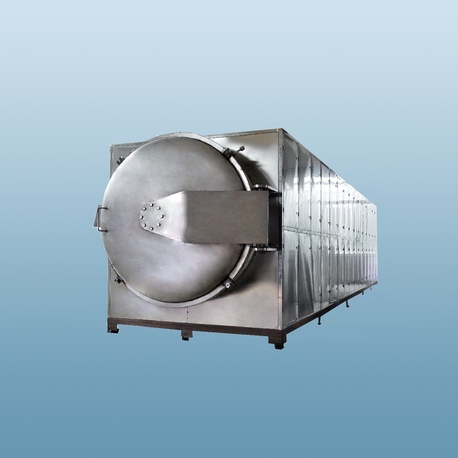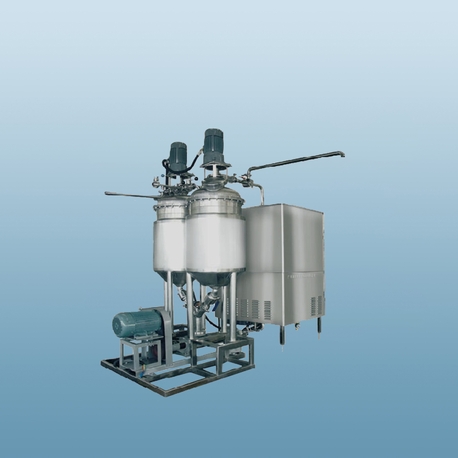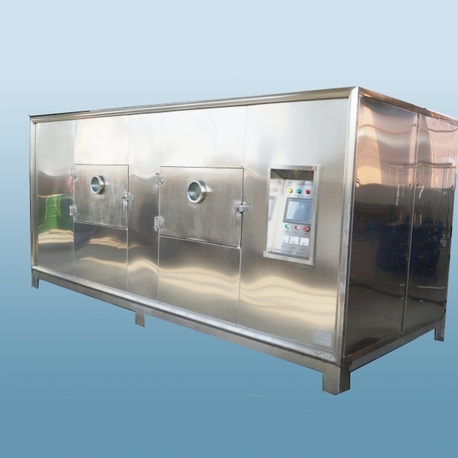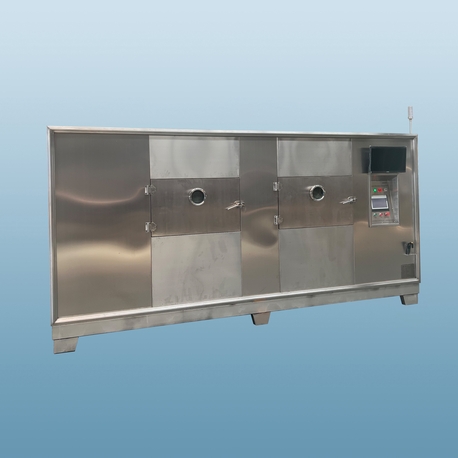In the world of food processing, preservation is paramount. While canning and freezing have their places, one technology stands out for its ability to concentrate flavors, extend shelf life dramatically, and create innovative products: the commercial food drying machine. This isn't your average home dehydrator; we're talking about industrial-scale systems that are the backbone of many food production lines. For businesses like Nasan, which designs robust industrial drying solutions, these machines are engineered for efficiency, consistency, and scalability. This article delves deep into the role, operation, and vast applications of the modern commercial food drying machine.

The Fundamental Role of a Commercial Food Drying Machine
At its core, a food drying machine works by removing moisture from food through the application of controlled heat and airflow. This process inhibits the growth of microorganisms like bacteria, yeast, and mold, which require water to thrive. For commercial operations, the goal goes beyond mere preservation. An industrial food drying machine is designed to:
Maximize Shelf Life: Reducing water activity (aw) to safe levels allows products to be stored for months or even years without refrigeration, slashing logistics and storage costs.
Preserve Nutritional Value: When properly calibrated, the drying process retains a significant portion of the food's original vitamins, minerals, and fiber, making it a valuable method for producing nutritious snacks and ingredients.
Concentrate Flavor: By removing water, the natural sugars and flavors become more intense, leading to products like sun-dried tomatoes, dried mangoes, and fruit powders.
Reduce Weight and Volume: This makes transportation more economical and opens up new market opportunities by making products easier to ship globally.
Create New Product Lines: From vegetable crisps and meat jerkies to powdered ingredients for soups and smoothies, a food drying machine enables product diversification.
How It Works: The Industrial Drying Process Unveiled
The operation of a commercial food drying machine is a precise science. While specific steps vary by technology, the general workflow is consistent and critical for achieving a high-quality, safe product.
Preparation: Raw materials are sorted, washed, and pre-treated. This may involve peeling, slicing, or dicing to a uniform size for even drying. Some foods, like fruits, may be blanched to deactivate enzymes that cause spoilage and color loss.
Loading: The prepared food is evenly spread onto trays, conveyor belts, or placed inside drying chambers. Uniform loading is essential to ensure consistent airflow and heat distribution.
The Drying Cycle: This is where the industrial food dryer takes over. Controlled heated air is circulated throughout the chamber. The temperature, humidity, and airflow are meticulously managed by automated control systems. Unlike simple dehydrators, commercial machines can have multiple stages with different temperature zones to optimize the process without cooking the product.
Cooling and Conditioning: After the drying cycle, the product is often cooled in a controlled manner to prevent condensation and re-absorption of moisture. Some products may require a conditioning period where residual moisture equilibrates throughout the pieces.
Packaging: The final, dried product is promptly packaged in moisture-proof and often airtight containers to prevent it from rehydrating and to maintain its crisp texture or chewy consistency.
Key Applications and Industries for Food Drying Machines
The versatility of the commercial food drying machine is staggering. Its applications span numerous sectors of the food industry.
Fruit and Vegetable Processing: This is one of the largest applications. Machines produce everything from raisins and banana chips to dried onions, garlic flakes, and herbs. Nasan has developed specific drying tunnels ideal for delicate berries and robust root vegetables alike.
Meat and Seafood Industry: The production of jerky (beef, poultry, pork) and dried fish is reliant on specialized food drying machines that can handle high-protein products safely, adhering to strict hygienic standards.
Herbal and Botanical Sector: Medicinal herbs, tea leaves, and spices must be dried carefully to preserve their active compounds and aromatic oils. Low-temperature drying technologies are often employed here.
Ingredient Manufacturing: A food drying machine is used to create powdered ingredients like milk powder, egg powder, and vegetable powders for use in bakeries, ready-meals, and food service.
Snack Food Production: The rise of healthy snacks has seen a boom in dried fruit and vegetable crisps, all produced using advanced drying technologies that create a crispy texture without frying.
Choosing the Right Solution: A Guide to Industrial Drying Systems
Selecting the correct food drying machine is a critical business decision. The right solution depends on the product, desired capacity, and budget. Leading manufacturers like Nasan offer a range of technologies:
Tray Dryers: Ideal for small to medium batches and products that require gentle handling or are prone to sticking. They are versatile and often used in R&D.
Conveyor Dryers (Belt Dryers): Perfect for high-volume, continuous processing. Food is loaded onto a mesh belt that moves through different temperature zones, making it highly efficient for uniform pieces.
Tunnel Dryers: Similar to conveyor dryers but often used for products that require longer drying times. Carts loaded with trays are moved through a long tunnel.
Heat Pump Dryers: These are highly energy-efficient food drying machines that recirculate and dehumidify hot air, significantly reducing operating costs. They are excellent for low-temperature drying applications.
When evaluating a food drying machine, consider factors like energy efficiency, ease of cleaning (hygienic design), compliance with food safety standards (like HACCP), and the level of process control and automation offered.

The Nasan Advantage in Industrial Drying
In a competitive market, partnering with an experienced manufacturer is key. Nasan has built a reputation for engineering durable and efficient food drying machines that stand up to the rigors of 24/7 commercial operation. Our focus on innovative airflow design and precise temperature control ensures that our clients achieve superior product quality with minimal energy consumption. Whether you are upgrading an existing line or installing your first industrial food dryer, Nasan provides tailored solutions and expert support.
Frequently Asked Questions (FAQ)
Q1: What is the main difference between a commercial food drying machine and a home dehydrator?
A1: The primary differences are scale, precision, and durability. A commercial food drying machine is built for continuous, high-volume operation with industrial-grade components. It features advanced control systems for precise regulation of temperature, humidity, and airflow, ensuring batch-to-batch consistency. Home dehydrators lack this level of control, capacity, and ruggedness.
Q2: How energy-intensive is operating a commercial food dryer?
A2: Energy consumption varies by the type and size of the machine. Traditional hot-air dryers can be significant energy users. However, modern technologies like heat pump-based food drying machines can reduce energy consumption by up to 60% compared to conventional models by recapturing and reusing heat.
Q3: Can one machine dry all types of food effectively?
A3: While a versatile tray dryer can handle many products, optimal results often require a machine tailored to specific product characteristics. For instance, drying leafy herbs requires different airflow and temperature settings than drying dense meat jerky. Reputable suppliers like Nasan help configure the right industrial food dryer for your specific product line.
Q4: What are the critical food safety considerations for a food drying machine?
A4: Hygiene is paramount. The machine must be designed with easy-to-clean, food-grade stainless steel surfaces and no crevices where bacteria can harbor. The process must reliably reduce the water activity to a safe level (typically below 0.6 for most products) to prevent microbial growth. Adherence to HACCP principles is essential.
Q5: What kind of maintenance does an industrial food dryer require?
A5: Regular maintenance is crucial for longevity and efficiency. This typically includes cleaning filters, inspecting and lubricating fans and motors, checking heating elements, and calibrating sensors. A preventative maintenance schedule, often provided by the manufacturer, should be strictly followed to avoid unplanned downtime.







